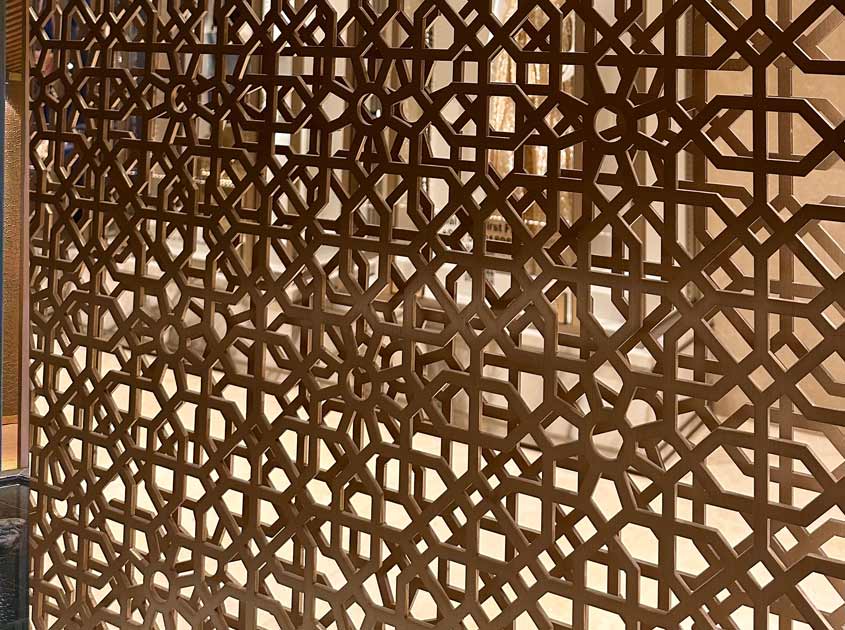Design and application of architectural decorative mesh
Intelligent control and automation
Intelligent sensing technology: With the introduction of sensor technology, architectural decorative nets can sense and adapt to the environment, such as automatically adjusting the transmittance according to the light intensity.
Automation system: Combined with the automation system, architectural decorative nets can automatically unfold, fold or change their shape to meet different usage needs.

Digital design and customized manufacturing
CAD and BIM application: Designers can use CAD software and BIM technology to design and simulate architectural decorative nets to achieve precise positioning and construction.
Customized production: Digital technology allows architectural decorative nets to be customized according to the needs of each project, providing more demand-oriented solutions.
Material innovation and structural optimization
Application of new materials: Explore the use of new materials such as carbon fiber and glass fiber to improve the strength, lightweight and corrosion resistance of architectural decorative nets.
Structural optimization design: Through structural analysis and optimization design, the stability and safety of architectural decorative nets are guaranteed, while achieving lightness and beauty.
Environmental interaction and human-computer interaction
Environmental perception function: Integrating environmental perception technology, architectural decorative nets can automatically adjust their shape or function according to changes in environmental parameters such as temperature and humidity.
Human-computer interaction design: Considering the human-computer interaction experience, the design of architectural decorative nets should focus on interactivity with users and create a more participatory and interesting space.
Energy saving and sustainable development
Energy-saving design: Combined with the characteristics of architectural decorative nets, design decorative nets that can achieve energy-saving effects, such as using ventilation effects to reduce indoor temperature, etc.
Sustainable material selection: Select sustainable materials, such as recyclable materials, to reduce resource consumption, in line with the concept of green buildings.
Interactive decorative nets and artistic expression
Interactive design: Combined with interactive technology, architectural decorative nets can achieve interaction with people and create an entertaining space experience.
Artistic expression: Design architectural decorative nets into works of art, integrate them into the overall design concept of the building, and show unique artistic value and beauty.
These details cover several key points in the design and application of architectural decorative nets, including intelligent control, digital design, material innovation, environmental interaction, energy saving and environmental protection, artistic expression, etc. If you need to know more or have other questions, please feel free to let me know!
pre:Trends and future development of architectural decoration mesh
next:Architectural Metal Grid Types and Manufacturing Processes
© 2025 Joinwin Architectural Wire. All Rights Reserved. | Sitemap
Recommended Read
Luxury Decorative Metal Mesh for Middle Eastern Interiors and Architecture
Architectural Woven Wire Mesh: Redefining Modern Space Design